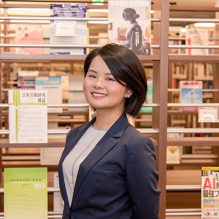-
About
- Kyoto Prize
-
Research Grants
-
Social Contributions
- Events
- News
This website uses cookies to improve the user experience. If you continue on this website, you will provide your consent to our use of cookies.
About
Research Grants
Social Contributions

Assistant Professor, Asia-Japan Research Institute, Ritsumeikan University *Profile is at the time of the award.
2024Inamori Research GrantsHumanities & Sociology
This study aims to elucidate the exchange of information and its reciprocal impact on Oriental medicine (including Kampo medicine and Chinese medicine) between Japan and China. Through this study, I hope to shed light on a new aspect of the history of cultural exchange between Japan and China from the angle of medical book research, and to contribute to building a more positive relationship between the two countries.
The exchange of medical knowledge in East Asia was not merely a one-way transmission from China to Japan, but also involved the reverse flow of ideas from Japan back to China. After the Meiji period, Japanese Kampo medicine texts were introduced into China by scholars, physicians, students, and merchants, contributing significantly to the development of modern Chinese medical literature. Yang Shoujing collected medical books from the Taki family during his stay in Japan and published them in China as the Yu Xiu Tang Yi Xue Cong Shu in 1884. Ding Fubao translated and published Yi Jie Zhi Tie Zhui in 1911 based on Japanese Kampo sources, while Chen Cunren compiled and published the Huang Han Yi Xue Cong Shu in 1936, containing over 90 Kampo works. These texts, including those by Yoshimasu Tōdō and Kitayama Yushōshi, deeply influenced Chinese physicians like Lu Yuanlei, who referenced them in key reinterpretations of classical texts such as Shang Han Lun and Jin Gui Yao Lüe. This cross-cultural circulation of medical texts exemplifies the dynamic nature of Sino-Japanese medical interactions in the modern period.
Humanities & Sociology
